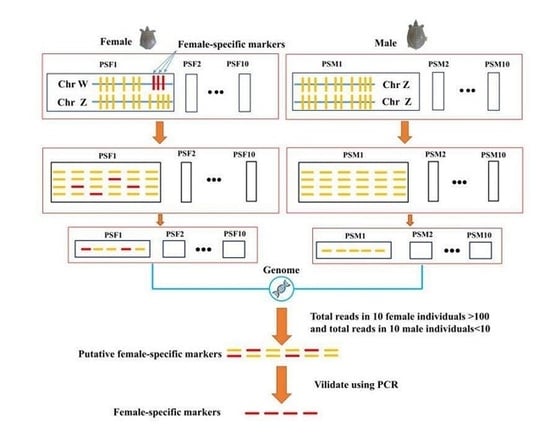Development and Validation of Sex-Specific Markers in Pelodiscus Sinensis Using Restriction Site-Associated DNA Sequencing
Abstract
Share and Cite
Liang, H.; Wang, L.; Sha, H.; Zou, G. Development and Validation of Sex-Specific Markers in Pelodiscus Sinensis Using Restriction Site-Associated DNA Sequencing. Genes 2019, 10, 302. https://doi.org/10.3390/genes10040302
Liang H, Wang L, Sha H, Zou G. Development and Validation of Sex-Specific Markers in Pelodiscus Sinensis Using Restriction Site-Associated DNA Sequencing. Genes. 2019; 10(4):302. https://doi.org/10.3390/genes10040302
Chicago/Turabian StyleLiang, Hongwei, Lihua Wang, Hang Sha, and Guiwei Zou. 2019. "Development and Validation of Sex-Specific Markers in Pelodiscus Sinensis Using Restriction Site-Associated DNA Sequencing" Genes 10, no. 4: 302. https://doi.org/10.3390/genes10040302
APA StyleLiang, H., Wang, L., Sha, H., & Zou, G. (2019). Development and Validation of Sex-Specific Markers in Pelodiscus Sinensis Using Restriction Site-Associated DNA Sequencing. Genes, 10(4), 302. https://doi.org/10.3390/genes10040302




